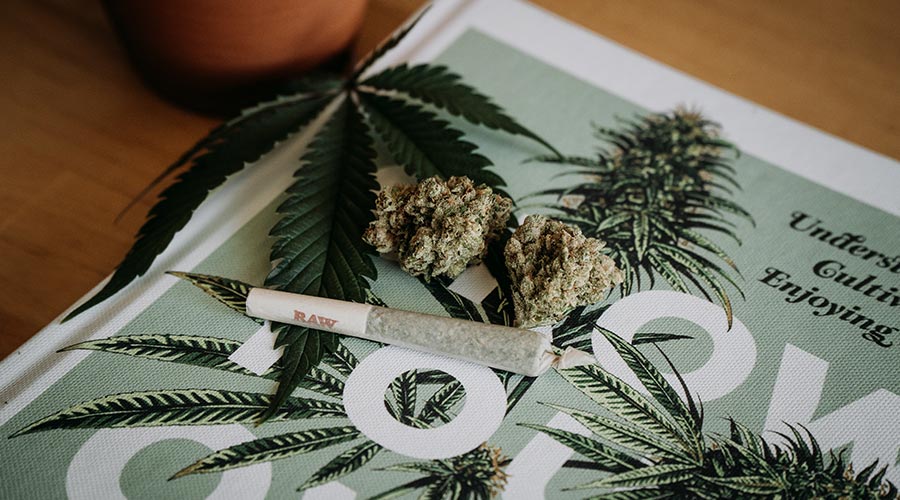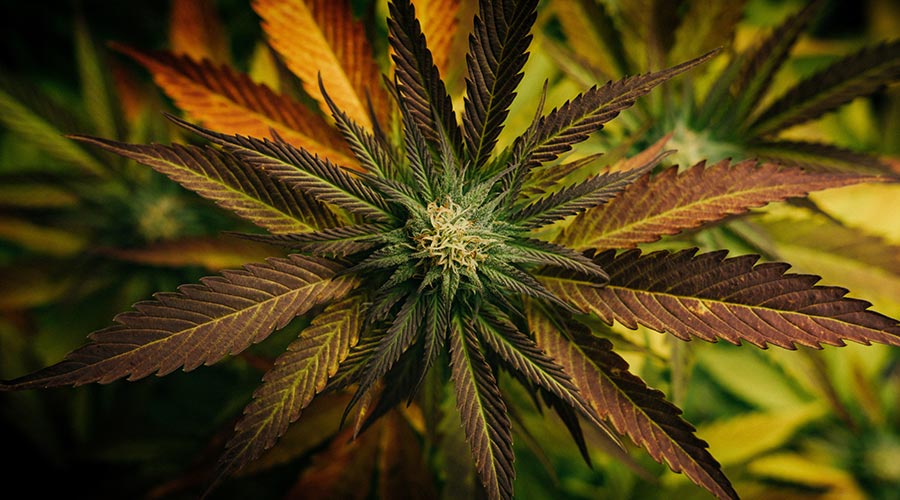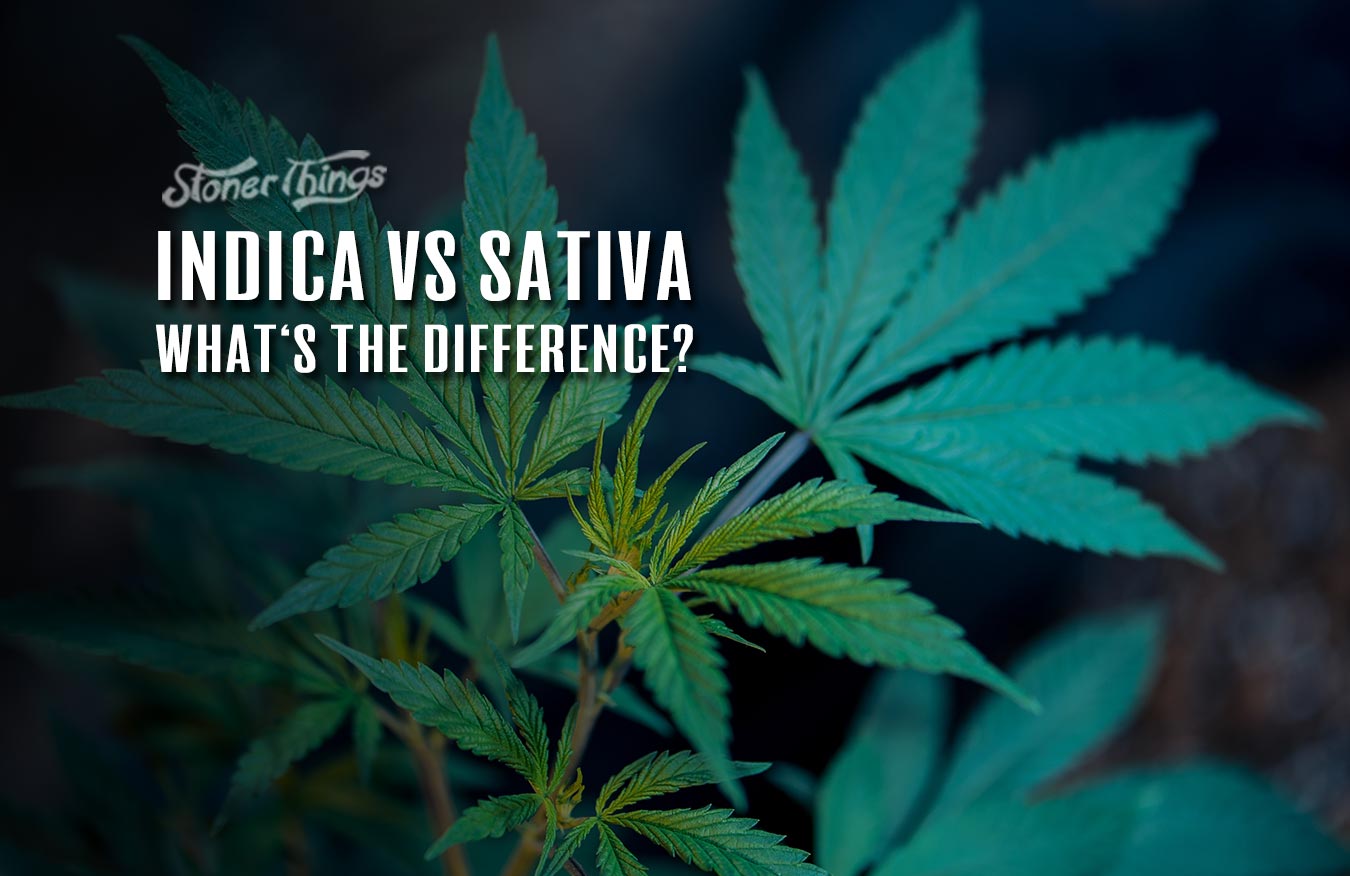Indica, Sativa, and Hybrid are all common terms at the dispensary, but what do they mean? Here’s everything you need to know about the difference between the three types of cannabis strains, as well as what to look for in a strain if you’re looking for a specific set of effects.
What’s the difference between indica, sativa and hybrid weed strains?
Over the last thousand years, cannabis has been bred selectively to promote feelings and effects. All of this selective breeding, cross breeding, and inbreeding has turned practically every strain under the sun into a hybrid strain, though most dispensaries still use indica, sativa, and hybrid to label their strains. With that in mind, you can consider indica, sativa, and hybrid as words that describe the way cannabis feels and not its genetic makeup.
Even though all strains are technically hybrids, some feel more relaxing and some feel more energizing. Strains labeled “indica” are usually more physically soothing, sedative, and more likely to make you hungry while strains labeled “sativa” are more likely to make you feel focused, creative, and energized. Strains labeled “hybrid” fall somewhere between and offer a good mix of effects.
Cannabis characteristics
There is a big debate within the cannabis industry about whether or not the indica, sativa, or hybrid labelling should even be used since they can be confusing.
Why? Because of the scientific classifications of cannabis plants. There are two different species of cannabis: Cannabis Indica and Cannabis Sativa. These aren’t plants that make you sleepy or make you energetic, though.
Cannabis Sativa refers exclusively to hemp plants— the ones used commercially for clothing, paper, rope and textiles that don’t promote psychoactive effects.
On the other hand, you have Cannabis Indica plants. These are the cannabis plants grown for dispensaries that do cause psychoactive effects and are grown for their THC. Cannabis Indica is the plant that includes all the strains labeled as indicas, sativas, and hybrids.


That said, whenever you shop at a dispensary, you’re only ever purchasing Cannabis Indica, even if it’s labeled a sativa or a hybrid. That’s where the confusion comes in! If you’re only buying Cannabis Indica, why are some strains labeled sativas or hybrids?
Most dispensaries just use this to make it easier on consumers. If you’re looking for a specific kind of high for medical reasons or for personal preferences, you’ve probably heard that indicas make you sleepy and sativas make you focused.
Most dispensaries label strains that cause a heavy body high, sleepy effects and pain relief as indica strains. Sativas usually cause an energetic lift and a focusing cerebral effect. With that in mind, a plant’s genetics mean very little when it comes to effects. A plant bred from two pure sativa strains could produce offspring that feel like sedative, so they’ll be labeled as indicas.
Every strain in the Cannabis Indica species is a hybrid at this point, but we still label them as indicas or sativas based on their cannabinoid and terpene content as well as the type of effects they promote. Dispensaries and cultivators use this labeling to help consumers find products with more specific effects. Ultimately, it’s easier to use indica/sativa/hybrid labels to describe how a strain will feel without breaking down the terpene and cannabinoid profiles and walking people through the Entourage Effect to every patient or rec user.
What actually impacts a strain’s effects?
Ultimately, a strain’s effects come from its terpene and cannabinoid content, not its genetic makeup. Terpenes and cannabinoids work together to boost each other’s effects in a phenomenon known as the Entourage Effect. Cannabinoids promote their own effects and so do terpenes, and when terpenes and cannabinoids are taken together, they can make those effects stronger.
Terpenes, like cannabinoids, are mildly psychoactive and can offer gentle mood-altering effects. They’re found in all plants and produced in the same resin glands as cannabinoids. They’re what cause your weed to smell like berries, citrus, pine, gas, earth, or otherwise. You may have noticed how relaxing products are typically lavender scented or how morning cleansers are typically citrus scented. The terpenes found in lavender are sedative and can help reduce anxiety while the terpenes found in citrus are good for energy and focus.
However, cannabinoids are also psychoactive and promote effects. THC, CBD, and CBN are the most common ones found in cannabis and help drive its therapeutic effects and recreational uses. THC helps with pain and nausea and can make us feel euphoric and hungry. CBD reduces anxiety, pain, and inflammation. CBN comes from THC and causes a psychoactive effect along with a deep, sedative effect.


When these cannabinoids are taken with terpenes, they promote stronger physical and mental effects. Plants that contain THC or even CBN and CBD are labelled as indicas when they contain sedative terpenes like Caryophyllene or Myrcene and boost the sedative effects. Plants that just contain THC are labeled as sativas when they contain energizing and focusing terpenes like Pinene, Limonene, and Terpinolene. Hybrids are labeled hybrids if they fall somewhere between.
Ultimately, a strain is labeled indica/sativa/hybrid based on its cannabinoid and terpene content, which determines how it will feel. It has nothing to do with genetics at all!
Characteristics of indica cannabis strains
Indica strains are associated with their full body effects that can make you feel heavy, tingly, and deeply relaxed. The most common effects with indica strains are euphoria, happiness, and feeling very sleepy, which is why they’re usually referred to as nighttime strains. They contain primarily THC and may contain some CBD and CBN, too.
The most common terpenes found in indica-dominant strains are Myrcene, Beta-Caryophyllene, Linalool, Limonene, and Humulene. These terpenes are sedative and soothing and can be found in strains like Purple Punch, Grandaddy Purple, Northern Lights, and Blueberry.
In terms of plant characteristics, indicas tend to be smaller than sativa strains, and usually have a bushier structure. However, despite their shorter size, indicas generally produce greater yields than sativas.
Characteristics of sativa cannabis strains
Sativa strains are mostly considered energetic and offer a high that’s more in the head than in the body. They offer an uplifting, stimulating effect and soothe stress, boost motivation, stimulate creativity, and help you focus. They are considered daytime strains and mostly contain THC, though some will contain CBD. They almost never contain CBN, since they’re not sedative.
The most common terpenes found in sativa-dominant strains are Pinene, Limonene, Myrcene, and Valencene. These terpenes are mentally uplifting and focusing and can be found in strains like Sour Diesel, Jack Herer, Green Crack, and Durban Poison.
Sativa plants are characterized by a taller structure, with buds spread more sporadically along the stems. Sativa plants also generally take longer to flower than their indica counterparts.
Characteristics of hybrid cannabis strains
Hybrid strains typically contain THC and CBD. While all strains are technically hybrids, strains labeled as hybrids in the dispensary offer the best of both worlds when it comes to effects. They pull both indica and sativa effects, including euphoria, mental lifts, energy, gentle relaxation, and more.
They can contain different concentrations of all the most common terpenes found in cannabis, including Limonene, Myrcene, Pinene, b-Caryophyllene, Humulene, Linalool, delta-3 Carene, Eucalyptol, Borneol, Terpineol, and Ocimene. Some of the most popular hybrid strains include Gorilla Glue #4, Blue Dream. Wedding Cake, Girl Scout Cookies, and Gelato.













